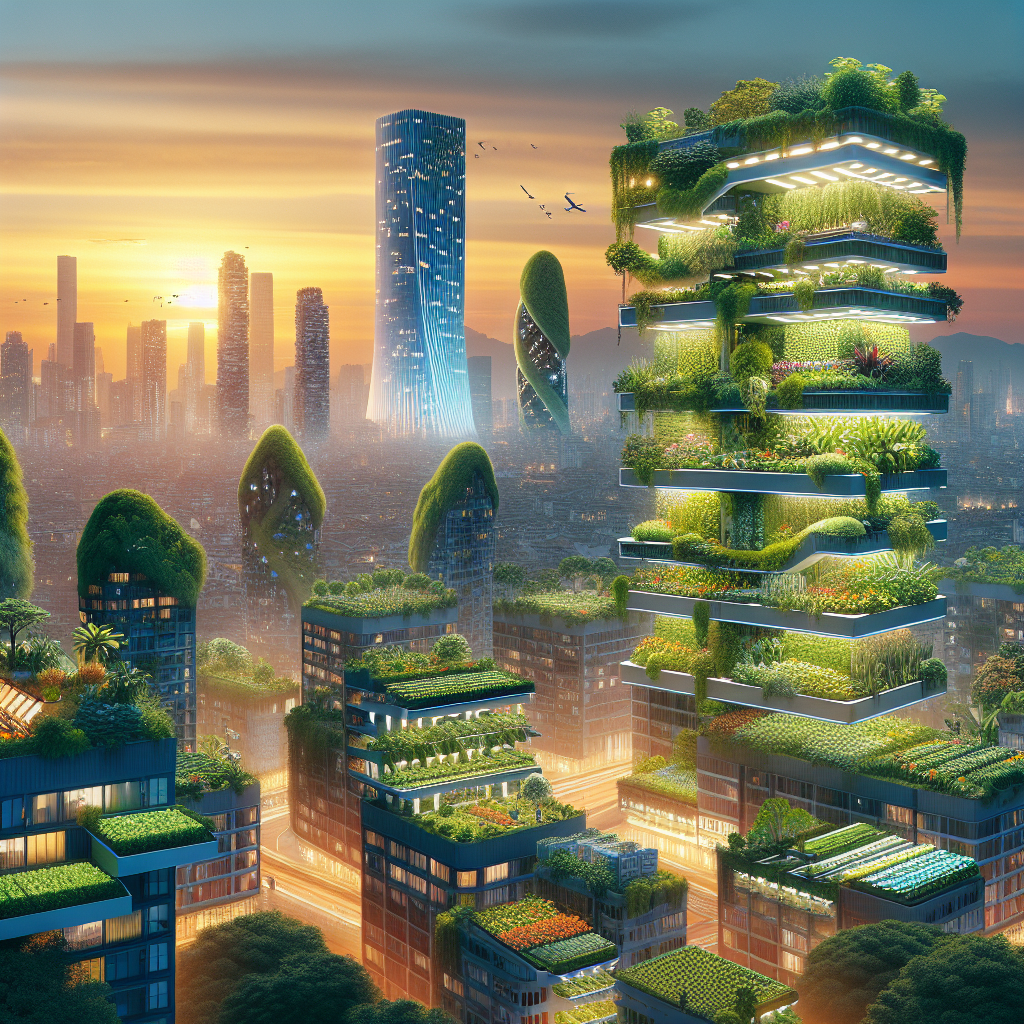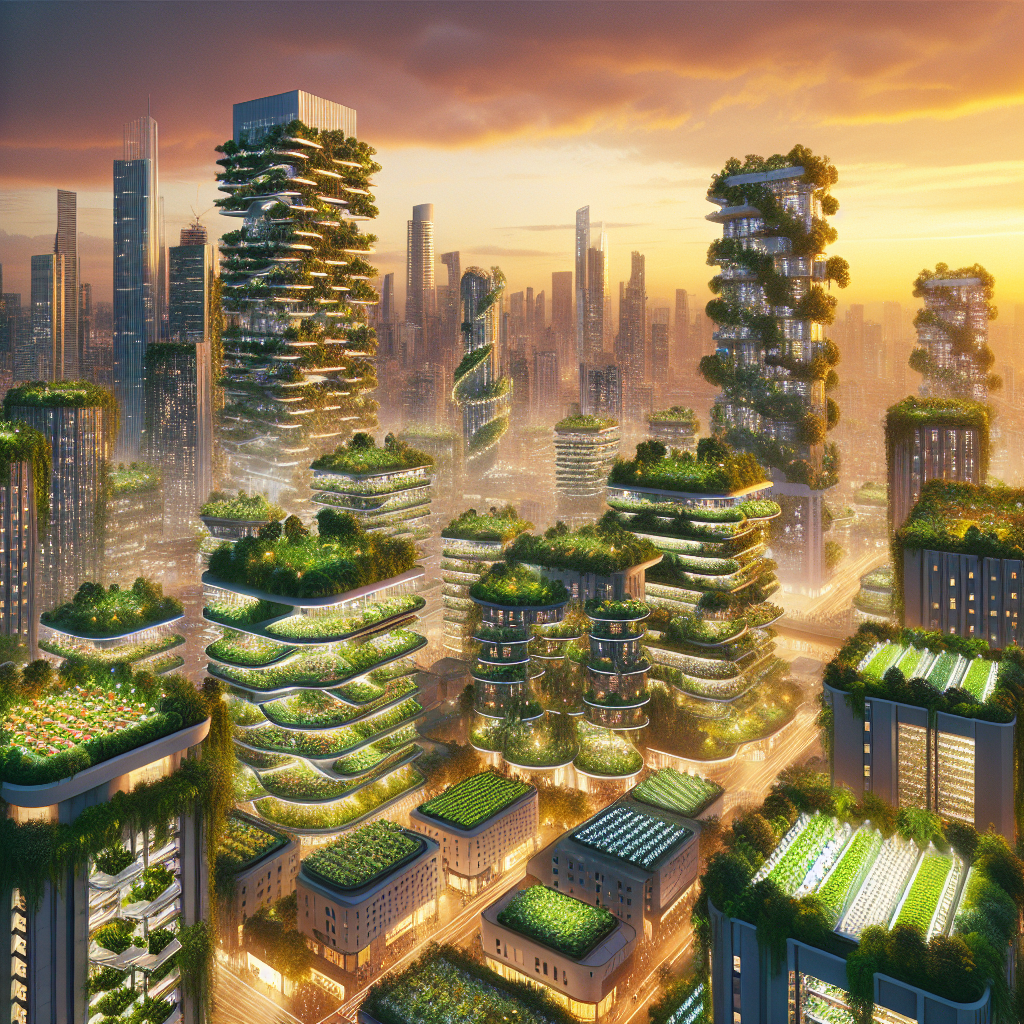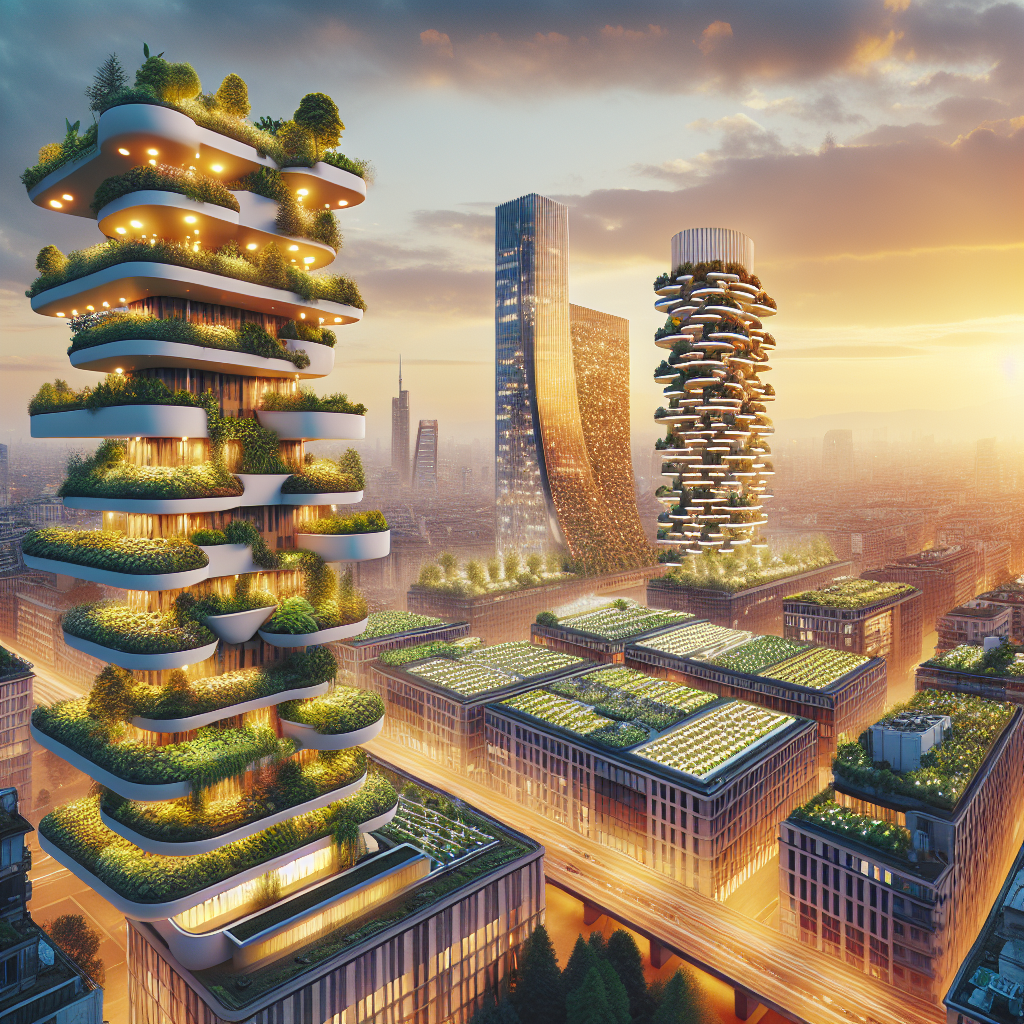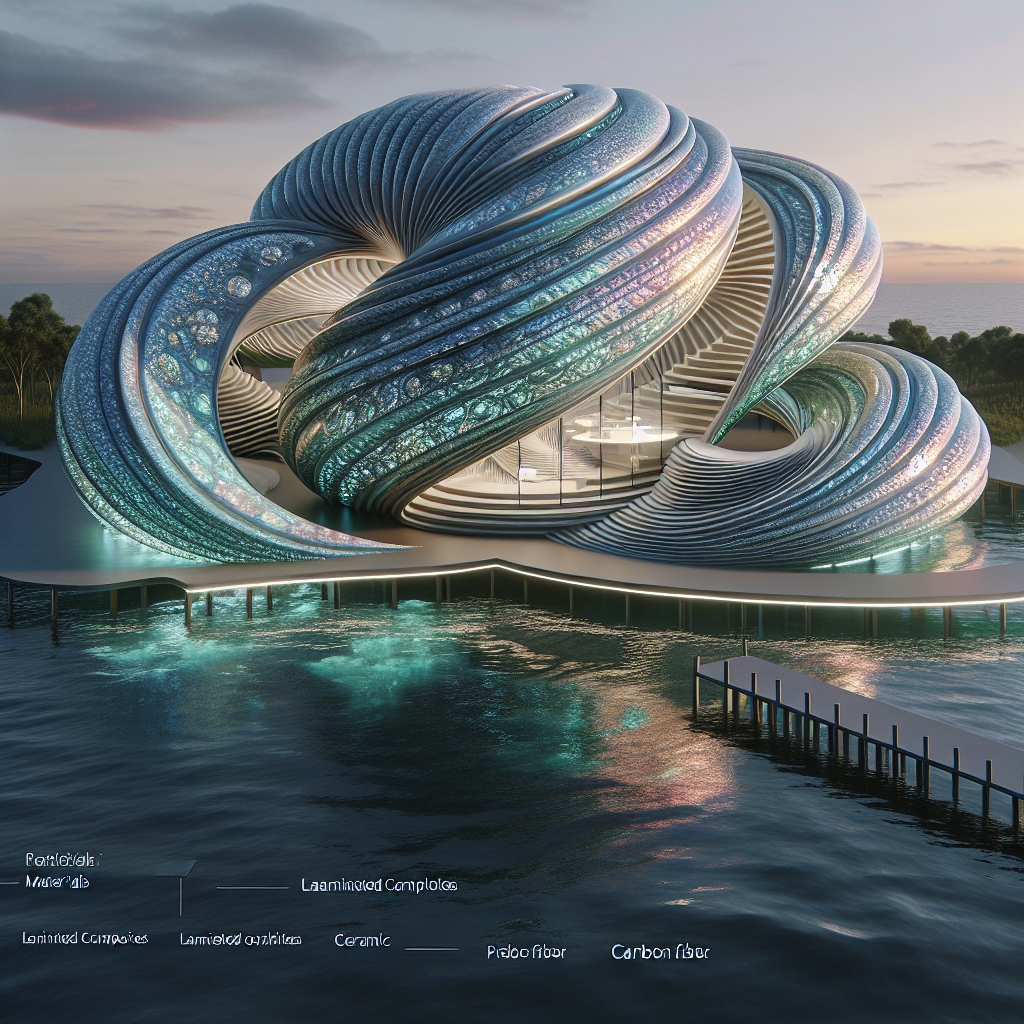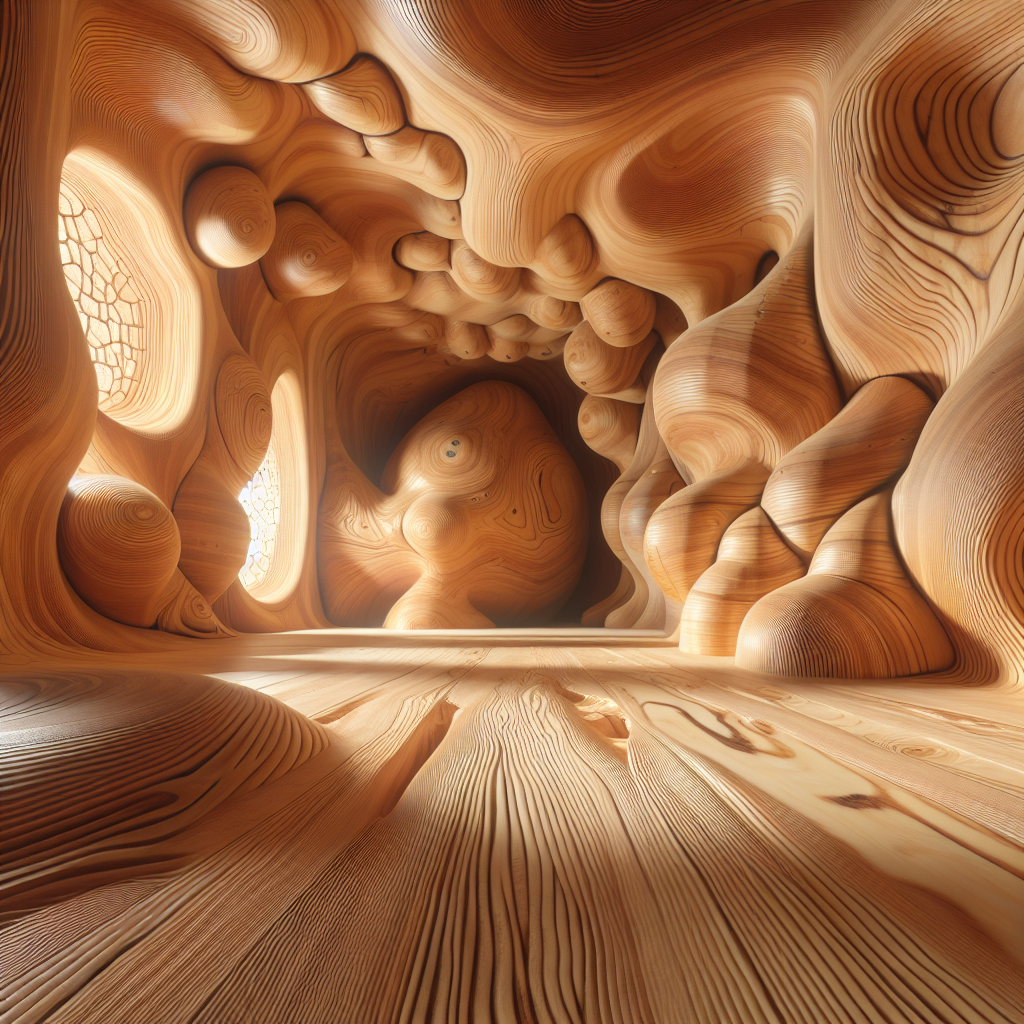Urban Farming: Cultivating Sustainability in City Landscapes
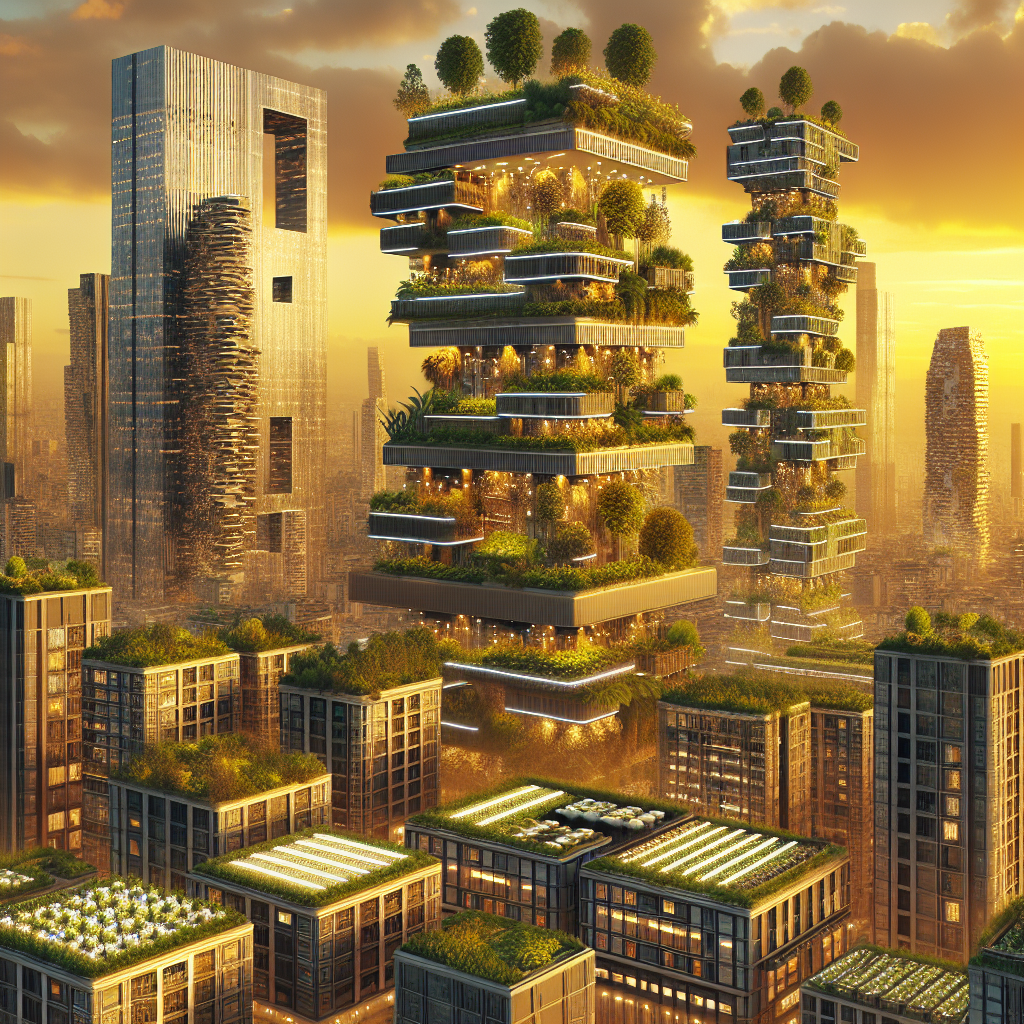
Urban Farming: Cultivating Sustainability in City Landscapes
In the bustling heart of cities worldwide, a quiet revolution is taking root. Amidst glass skyscrapers, concrete avenues, and the ceaseless hum of urban life, a verdant transformation is underway—urban farming. This innovative practice, once a niche concept, is rapidly reshaping cityscapes, architecture, and interior design, bringing nature back into the urban fold and addressing sustainability head-on. As design and architecture professionals, we find ourselves at the forefront of this green renaissance, crafting spaces that harmonize human habitation with agricultural ingenuity.
The Green Revolution in Urban Architecture
Urban farming, at its core, is the cultivation of food within city boundaries, utilizing spaces such as rooftops, balconies, vacant lots, and even vertical walls. This practice not only reduces food miles and enhances food security but also profoundly influences architectural design and urban planning. Architects and designers are increasingly integrating farming elements into their projects, creating multifunctional spaces that merge aesthetics, functionality, and sustainability.
One compelling example is the Bosco Verticale in Milan, Italy. Designed by Stefano Boeri Architetti, these twin residential towers feature lush vertical forests that integrate over 900 trees and thousands of shrubs and plants into their façades. The towers not only provide a striking visual contrast to the urban skyline but also improve air quality, reduce urban heat, and foster biodiversity. This approach exemplifies how urban farming principles can seamlessly blend with contemporary architecture, creating sustainable and visually captivating cityscapes.
Innovative Techniques Shaping Urban Farming
Urban farming encompasses various innovative techniques, each offering unique opportunities for designers and architects. Among these, vertical farming stands out as a particularly transformative approach. By cultivating crops in vertically stacked layers within controlled environments, vertical farming maximizes limited urban space and significantly reduces water and land usage. This method has gained traction globally, with projects like AeroFarms in Newark, New Jersey, showcasing the potential of indoor agriculture to revolutionize food production within cities. For a deeper exploration of this method, see our previous article on vertical farming and sustainable agriculture.
Hydroponic farming, another prominent technique, involves growing plants without soil, using nutrient-rich water solutions instead. This soil-less method is particularly suited to urban environments, allowing for efficient, space-saving cultivation. Hydroponic systems can be elegantly integrated into interior designs, transforming residential and commercial spaces into thriving green oases. For instance, modular hydroponic installations in restaurants and offices not only provide fresh produce but also enhance interior aesthetics, creating visually appealing and functional environments. Explore more about this innovative approach in our article on hydroponic farming and indoor agriculture.
Biophilic Design: Enhancing Human Well-being
Urban farming intersects profoundly with biophilic design—a practice centered around incorporating natural elements into built environments to enhance human health and well-being. By integrating greenery and agriculture into urban spaces, architects and designers can significantly improve air quality, reduce stress, and promote overall wellness among city dwellers. Biophilic elements such as living walls, rooftop gardens, and indoor plant installations not only beautify spaces but also foster deeper connections between humans and nature.
Research consistently underscores the benefits of biophilic design. According to a recent study, workplaces featuring natural elements report increased productivity, creativity, and employee satisfaction. Similarly, residential spaces designed with biophilic principles experience improved mental health outcomes and overall quality of life. To delve deeper into biophilic design and its impact, refer to our detailed exploration on biophilic design and human well-being.
Case Study: Paris 2024 and the Urban Farming Legacy
The upcoming Summer Olympic Games in Paris 2024 present a compelling case study in integrating urban farming into large-scale urban development. The city has committed to sustainability and innovation, embedding urban agriculture into its architectural and design strategies. Notably, the Olympic Village will feature extensive rooftop gardens, vertical farms, and community agricultural spaces, demonstrating how urban farming can be seamlessly integrated into major international events and urban planning initiatives. This approach not only enhances sustainability but also leaves a lasting legacy of green infrastructure for future generations. Discover more about the architectural impact of Paris 2024 in our analysis of Paris 2024’s architectural influence.
Designing for Sustainability: Materials and Innovations
Urban farming also intersects with the broader sustainability movement in architecture and design, influencing material choices and construction techniques. The rise of biodegradable architecture, reclaimed materials, and timber construction reflects a growing commitment to environmentally responsible design. Wooden skyscrapers, for instance, are gaining popularity due to their sustainability credentials, aesthetic appeal, and structural capabilities. Projects like the Mjøstårnet in Norway exemplify how timber can be utilized effectively in high-rise construction, aligning with urban farming’s ethos of sustainability and innovation. Explore this trend further in our feature on timber in high-rise construction.
Moreover, designers are increasingly employing circular economy principles, creating zero-waste masterpieces that prioritize resource efficiency and sustainability. From adaptive reuse of abandoned buildings to modular and flexible designs, the integration of urban farming complements these strategies, promoting holistic sustainability within urban environments.
The Future of Urban Farming in Design and Architecture
As cities continue to expand and face mounting environmental challenges, urban farming emerges as a vital solution, reshaping architectural practices and urban planning paradigms. Architects and designers have a unique opportunity—and responsibility—to champion this green revolution, crafting spaces that harmonize human habitation with ecological stewardship.
Looking ahead, innovations such as augmented reality in design visualization, AI-driven architectural planning, and advanced hydroponic systems promise to further enhance urban farming’s integration into city landscapes. These technological advancements will enable more precise, efficient, and aesthetically compelling designs, solidifying urban farming’s role as a cornerstone of sustainable urban development.
Ultimately, urban farming represents more than just a trend—it embodies a profound shift toward sustainability, resilience, and human-centric design. By embracing this movement, architects and designers can cultivate thriving, sustainable cities that nourish both people and the planet.
Conclusion: Cultivating a Sustainable Urban Future
Urban farming is not merely about growing food in cities; it represents a holistic approach to urban sustainability, influencing architecture, interior design, and urban planning. By integrating innovative agricultural practices into urban environments, designers and architects can create spaces that are not only functional and beautiful but also environmentally responsible and socially beneficial. As we continue to navigate the complexities of urbanization and climate change, urban farming offers a promising pathway toward a greener, healthier, and more sustainable future.
In embracing this green revolution, we cultivate not just crops, but also a deeper connection between humanity and nature, fostering resilient communities and vibrant urban ecosystems for generations to come.
